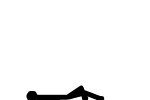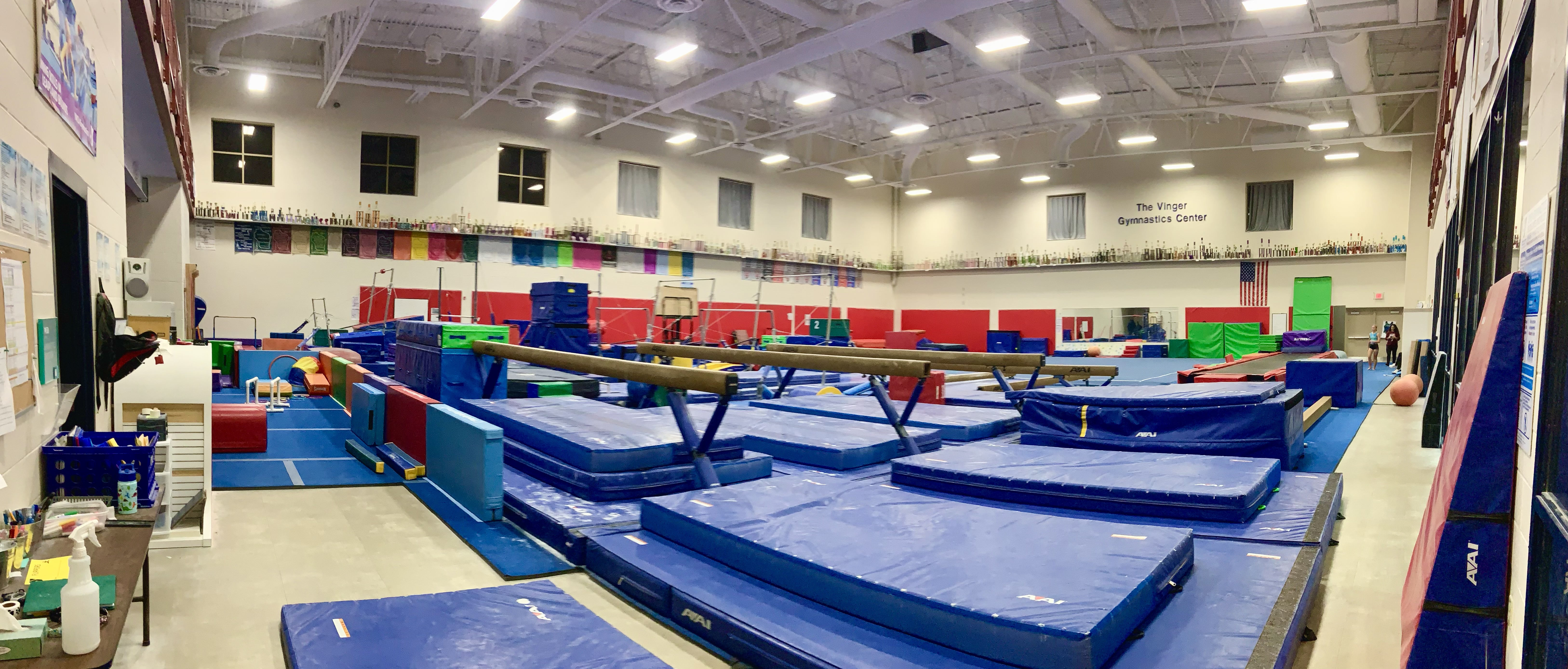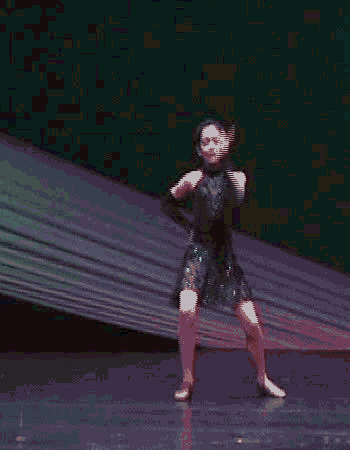|
Kip-up
A kip-up or kick-up (also called a rising handspring, Chinese get up, kick-to-stand, nip-up, flip-up, or carp skip-up) is an acrobatic move in which a person transitions from a supine position, supine, and less commonly, a prone position version known as prone get-up, to a standing position. It is used in activities such as breakdancing, acro dance, gymnastics, martial arts (specifically kung fu), professional wrestling, and freerunning, and in action film fight sequences. It is executed by propelling the body away from the floor so that the performer is momentarily airborne, and typically ends with the performer standing in a squatting position. Not only does the kip-up require muscle activation and strength, but it also requires proper technique for successful completion. A practitioner must perform the preparation phase (initiation of movement until directly before flight), aerial phase (time spent in flight), and landing phase (time from touchdown of the feet to maintenance ... [...More Info...] [...Related Items...] OR: [Wikipedia] [Google] [Baidu] |
Acro Dance
Acro dance is a style of dance that combines classical dance technique with acrobatic elements. It is defined by its athletic character, its unique choreography, which blends dance and acrobatics, and its use of acrobatics in a dance context. It is a popular dance style in amateur competitive dance as well as in professional dance theater and in contemporary circus productions such as those by Cirque du Soleil. This is in contrast to acrobatic, artistic and rhythmic gymnastics, which are sports that employ dance elements in a gymnastics context under the auspices of a governing gymnastics organization (such as FIG) and subject to a Code of Points. Acro dance is known by various other names including ''acrobatic dance'' and ''gymnastic dance'', though it is most commonly referred to simply as ''acro'' by dancers and dance professionals. Acro is an especially challenging dance style for dancers as it requires them to be trained in both dance and acrobatic skills. History Ac ... [...More Info...] [...Related Items...] OR: [Wikipedia] [Google] [Baidu] |
Kip (artistic Gymnastics)
In artistic gymnastics, a kip is a technique that involves flexing or piking at the hips, and then rapidly extending the hip joints to impart momentum. It may be performed in some form on all apparatuses, but is most commonly performed on the women's uneven bars and on the men's rings, parallel bars, and horizontal bar. The kip is an important technique that is used as both a mount and an element or connecting technique in a bar routine. The kip allows the gymnast to swing below the bar to arrive in a front support on the bar. From the front support, the gymnast may then perform any number of skills. The glide kip is the most commonly used mount on the women's uneven bars. The kip has been used since the early days of modern gymnastics. Currently, in the US, the kip first appears in the women's USAG Level 4. Variations Variations of the kip include the long hang kip, glide kip,Goeller, Karen M"Ahhh... The Glide Kip"''Technique Magazine'' Nov./Dec. 2004 drop kip, kip with sto ... [...More Info...] [...Related Items...] OR: [Wikipedia] [Google] [Baidu] |
Squatting Position
Squatting is a versatile List of human positions, posture where the weight of the body is on the feet but the knees and hips are bent. In contrast, sitting involves supporting the weight of the body on the ischial tuberosities of the pelvis, with the lower buttocks in contact with the ground or a horizontal object. The angle between the legs when squatting can vary from zero to widely splayed out, flexibility permitting. Another variable may be the degree of forward tilt of the upper body from the hips. Squatting may be either full or partial. Crouching is usually considered to be synonymous with squatting. It is common to squat with one leg and kneel with the other leg. One or both heels may be up when squatting. Young children often instinctively squat. Among Chinese, Southeast Asian and Eastern European adults, squatting often takes the place of sitting or standing. Etymology Squatting comes from the Old French ''esquatir/escatir'', meaning to "compress/press down".Harper, D. ... [...More Info...] [...Related Items...] OR: [Wikipedia] [Google] [Baidu] |
Martial Arts Techniques
Marcus Valerius Martialis (known in English as Martial ; March, between 38 and 41 AD – between 102 and 104 AD) was a Roman and Celtiberian poet born in Bilbilis, Hispania (modern Spain) best known for his twelve books of ''Epigrams'', published in Ancient Rome, Rome between AD 86 and 103, during the reigns of the emperors Domitian, Nerva and Trajan. In these poems he satirises city life and the scandalous activities of his acquaintances, and romanticises his provincial upbringing. He wrote a total of 1,561 epigrams, of which 1,235 are in elegiac couplets. Martial has been called the greatest Latin epigrammatist, and is considered the creator of the modern epigram. He also coined the term plagiarism. Early life Knowledge of his origins and early life are derived almost entirely from his works, which can be more or less dated according to the well-known events to which they refer. In Book X of his ''Epigrams'', composed between 95 and 98, he mentions celebrating his fifty ... [...More Info...] [...Related Items...] OR: [Wikipedia] [Google] [Baidu] |
Gymnastics Elements
Gymnastics is a group of sport that includes physical exercises requiring Balance (ability), balance, Strength training, strength, Flexibility (anatomy), flexibility, agility, Motor coordination, coordination, artistry and endurance. The movements involved in gymnastics contribute to the development of the arms, legs, shoulders, back, chest, and Abdomen, abdominal muscle groups. Gymnastics evolved from exercises used by the Ancient Greece, ancient Greeks that included skills for mounting and dismounting a horse. The most common form of competitive gymnastics is artistic gymnastics (AG); for women, the events include floor (gymnastics), floor, vault (gymnastics), vault, uneven bars, and balance beam; for men, besides floor and vault, it includes still rings, rings, pommel horse, parallel bars, and horizontal bar. The governing body for competition in gymnastics throughout the world is the Fédération Internationale de Gymnastique (FIG). Eight sports are governed by the FIG, in ... [...More Info...] [...Related Items...] OR: [Wikipedia] [Google] [Baidu] |
Breakdance Moves
Breakdancing or breaking, also called b-boying (when performed by men) or b-girling (women), is a style of street dance originated by African Americans and Puerto Ricans in The Bronx borough of New York City. Breakdancing consists mainly of four kinds of movement—toprock, footwork, power moves, and freezes—and is typically set to songs containing drum breaks, especially in funk, soul, and hip-hop. Its modern dance elements originated among the poor youth of New York during the early 1980s. It is tied to the birth of hip-hop, whose DJs developed rhythmic break for dancers. The dance form has expanded globally, with an array of organizations and independent competitions supporting its growth. Breaking became an Olympic sport at the 2024 Summer Olympics in Paris, as per a December 7, 2020 decision by the International Olympic Committee, after a proposal by the World DanceSport Federation. Terminology The term derives from the dancers who saved their best moves for the in ... [...More Info...] [...Related Items...] OR: [Wikipedia] [Google] [Baidu] |
Kip (trampolining)
In trampolining, a kip is a skill in which a supporter adds or removes lift to the performer's bounce by pressing on the trampoline bed to apply weight just before or after the performer makes contact with the bed. The term ''kipping'' is sometimes used only for the technique that adds additional height by applying weight before the performer lands and removing the weight when the performer has depressed the bed, with the term ''killing'' used to distinguish the technique that applies pressure after the performer lands to lessen the bounce. A kip is mostly used by coaches while helping performers develop new skills. In such circumstances, an experienced coach will either stand, or bounce, alongside the performer and by timing their actions in the bed, they will be able to either increase, decrease, or simply stabilize the level of bounce experienced by the performer. Technique The kip action itself occurs while the coach is in contact with the trampoline bed; they will bend their k ... [...More Info...] [...Related Items...] OR: [Wikipedia] [Google] [Baidu] |
Handspring (Gymnastics)
A handspring (also ''flic-flac'' or ''flip-flop'') is an acrobatic move in which a person executes a complete revolution of the body by lunging headfirst from an upright position into an inverted vertical position and then pushing off (i.e., "springing") from the floor with the hands so as to leap back to an upright position. The direction of body rotation in a handspring may be either forward or backward, and either kind may be performed from a stationary standing position or while in motion. Handsprings are performed in various physical activities, including acro dance, cheerleading and gymnastics. In competitive activities, handsprings may be judged on a number of criteria. Description Types The direction of body rotation in a handspring may be either forward or backward, resulting in a front handspring or back handspring, respectively. In a back handspring, the performer does not see where the hands will land until after the move has begun. A ''standing'' handspring is o ... [...More Info...] [...Related Items...] OR: [Wikipedia] [Google] [Baidu] |
Chinese Martial Arts
Chinese martial arts, commonly referred to with umbrella terms Kung fu (term), kung fu (; ), kuoshu () or wushu (sport), wushu (), are Styles of Chinese martial arts, multiple fighting styles that have developed over the centuries in Greater China. These fighting styles are often classified according to common traits, identified as "families" of martial arts. Examples of such traits include ''Shaolin kung fu, Shaolinquan'' () physical exercises involving Five Animals, All Other Animals () mimicry or training methods inspired by Chinese philosophies, Old Chinese philosophies, religions and legends. Styles that focus on qi manipulation are called ''Internal martial arts, internal'' (; ), while others that concentrate on improving muscle and cardiovascular fitness are called ''Styles of Chinese martial arts#External styles, external'' (; ). Geographical associations, as in ''northern'' (; ) and ''Nanquan (martial art), southern'' (; ), is another popular classification method. Ter ... [...More Info...] [...Related Items...] OR: [Wikipedia] [Google] [Baidu] |
Diving (sport)
Diving is the sport of jumping or falling into water from a Diving platform, platform or springboard, usually while performing acrobatics. Diving is an internationally recognised sport that is part of the Olympic Games. In addition, unstructured and non-competitive diving is a recreational pastime. Competitors possess many of the same characteristics as gymnastics, gymnasts and dancers, including strength, flexibility, kinaesthetic judgement and air awareness. Some professional divers were originally gymnasts or dancers as both the sports have similar characteristics to diving. Dmitri Sautin holds the record for most Olympic diving medals won, by winning eight medals in total between 1992 and 2008. History Antiquity In the Tomb of Hunting and Fishing there is a wall painting from around 530 - 500 BCE that shows a person climbing rocks towards a cliff face and a second person diving down the cliff face towards water. The Tomb of the Diver in Paestum, contains a fresco da ... [...More Info...] [...Related Items...] OR: [Wikipedia] [Google] [Baidu] |





